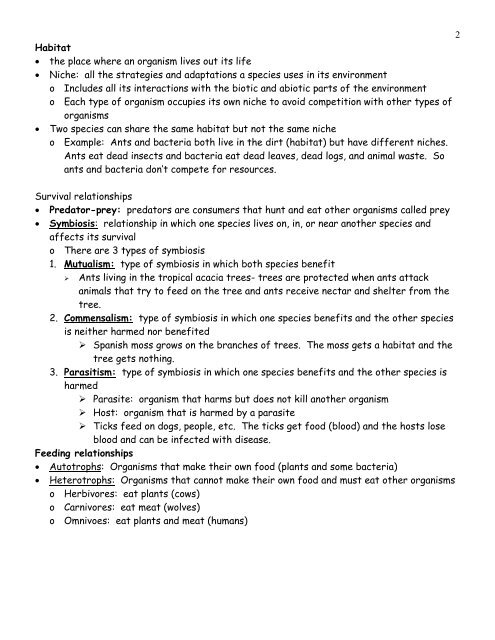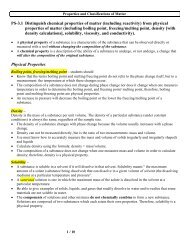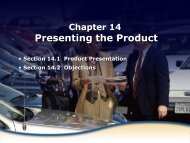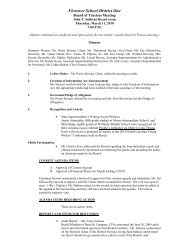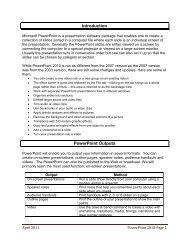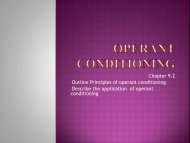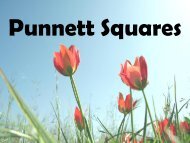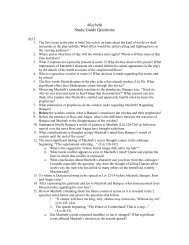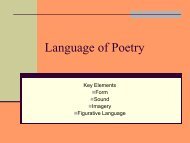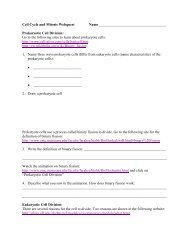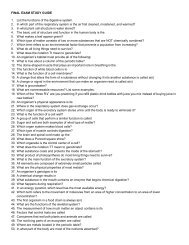Chapter 2: Principles of Ecology
Chapter 2: Principles of Ecology
Chapter 2: Principles of Ecology
You also want an ePaper? Increase the reach of your titles
YUMPU automatically turns print PDFs into web optimized ePapers that Google loves.
2<br />
Habitat<br />
the place where an organism lives out its life<br />
Niche: all the strategies and adaptations a species uses in its environment<br />
o Includes all its interactions with the biotic and abiotic parts <strong>of</strong> the environment<br />
o Each type <strong>of</strong> organism occupies its own niche to avoid competition with other types <strong>of</strong><br />
organisms<br />
Two species can share the same habitat but not the same niche<br />
o Example: Ants and bacteria both live in the dirt (habitat) but have different niches.<br />
Ants eat dead insects and bacteria eat dead leaves, dead logs, and animal waste. So<br />
ants and bacteria don’t compete for resources.<br />
Survival relationships<br />
Predator-prey: predators are consumers that hunt and eat other organisms called prey<br />
Symbiosis: relationship in which one species lives on, in, or near another species and<br />
affects its survival<br />
o There are 3 types <strong>of</strong> symbiosis<br />
1. Mutualism: type <strong>of</strong> symbiosis in which both species benefit<br />
‣ Ants living in the tropical acacia trees- trees are protected when ants attack<br />
animals that try to feed on the tree and ants receive nectar and shelter from the<br />
tree.<br />
2. Commensalism: type <strong>of</strong> symbiosis in which one species benefits and the other species<br />
is neither harmed nor benefited<br />
‣ Spanish moss grows on the branches <strong>of</strong> trees. The moss gets a habitat and the<br />
tree gets nothing.<br />
3. Parasitism: type <strong>of</strong> symbiosis in which one species benefits and the other species is<br />
harmed<br />
‣ Parasite: organism that harms but does not kill another organism<br />
‣ Host: organism that is harmed by a parasite<br />
‣ Ticks feed on dogs, people, etc. The ticks get food (blood) and the hosts lose<br />
blood and can be infected with disease.<br />
Feeding relationships<br />
Autotrophs: Organisms that make their own food (plants and some bacteria)<br />
Heterotrophs: Organisms that cannot make their own food and must eat other organisms<br />
o Herbivores: eat plants (cows)<br />
o Carnivores: eat meat (wolves)<br />
o Omnivoes: eat plants and meat (humans)


